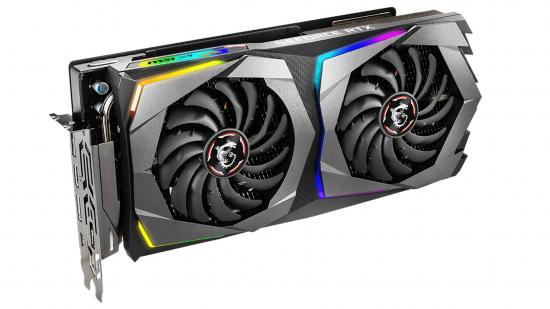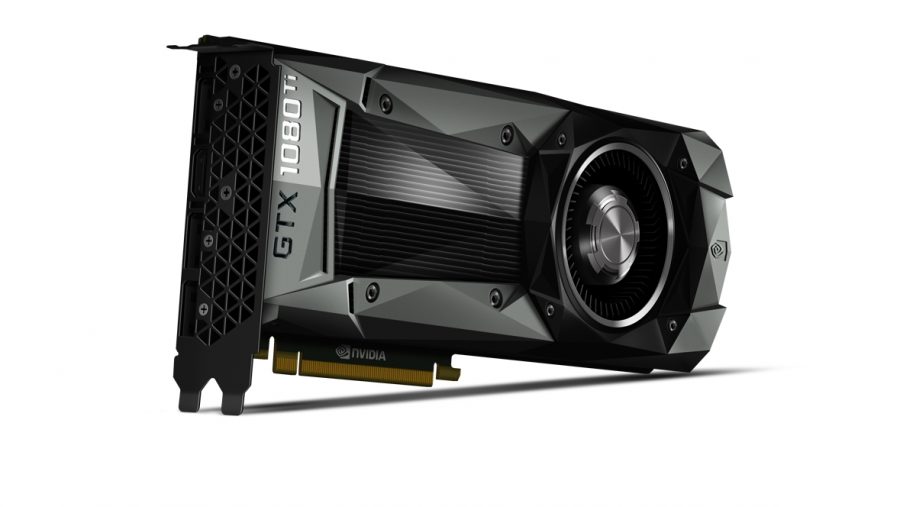The RTX 2070 is the cheapest way to get your hands on real-time ray tracing in the near-future, but with DirectX ray tracing trapped within the tardy Windows October Update, the ‘holy grail’ of gaming is just about as tangible as the goblet itself. For the time being, the RTX 2070 is going to have to get by on regular ol’ rendering alone.
The TU106 GPU is plenty capable of matching the performance of the GTX 1080, even at its reference clockspeeds with a moderate cooler. However, matching the performance of a last-gen card for the same price as a last-gen card isn’t all that convincing. No, the RTX 2070 needs to go a little further than that to win our love. We want GTX 1080 Ti performance.
As far as core componentry goes, the GTX 1080 Ti and RTX 2070 don’t share too many similarities. The 1080 Ti trumps the 2070 in memory bandwidth – 484GB/s to 448GB/s – and memory capacity. The CUDA core count is also majorly in the 1080 Ti’s favour – its GP102 GPU complete with 1,280 more CUDA cores than the Turing TU106 GPU.
To overcome the physical limitations, we needed the best graphics card for the job. Luckily, that was an easy decision. We settled for the fastest silicon this side of the Atlantic… that just so happened to be in our office: the MSI RTX 2070 Gaming Z. This is above and beyond the best RTX 2070 we’ve got to hand, and the best chance of getting the RTX 2070 to break on through to the other side on the performance charts.

| MSI RTX 2070 Gaming Z | Nvidia GTX 1080 Ti Founders Edition | |
| GPU | TU106 | GP102 |
| CUDA cores | 2,304 | 3,584 |
| VRAM | 8GB GDDR6 | 11GB GDDR5X |
| Memory bus | 256-bit | 352-bit |
| Memory bandwidth | 448GB/s | 484GB/s |
| Base clock | 1,410MHz | 1,480Mhz |
| Boost clock | 1,830Mhz | 1,582Mhz |
| Price (MSRP) | $600 | $699 |
This graphics card fits the bill perfectly. It features two large TORX fans, a massive heat sink, and has already completed half the work for us with a factory overclock. The Gaming Z is pre-tweaked out of the box, resulting in a 210Mhz increase to the boost clock of the reference 2070.
While a stock RTX 2070 manages to top a GTX 1080, it falls quite a bit short of the GTX 1080 Ti in most games. The Gaming Z, on the other hand, gets within just a few frames of the GTX 1080 Ti – sometimes even on par with the Pascal flagship. With cooling plenty capable of taking that a little further, the GPU has a little more potential, however.
The EVGA X1 Precision app sets an acceptable voltage/frequency curve that won’t result in a blank screen and one frustrated hardware writer midway through a benchmark run. This results in a stable clock of 2,040Mhz under load on the GPU. Memory requires a human touch, but the Gaming Z is capable of a quick and easy 500MHz boost – ostensibly taking this card from 14Gbps to 15Gbps.
PCGamesN Test Rig: Intel Core i7 8700K @4.3GHz, Asus ROG STRIX Z370-E Gaming, 16GB Crucial Ballistix DDR4, Samsung 860 Evo 4TB, Corsair HX1200i, Philips BDM3275, Windows 10 Pro 64-bit.
The results speak for themselves, but not only has the RTX 2070 proven itself capable of GTX 1080 Ti performance, it can sometimes even surpass its Pascal predecessor in some titles.
Sadly not all games care for the changes made within Nvidia’s Turing architecture. The CUDA and memory superiority of the 1080 Ti comes out on top of the 2070 in both Shadow of the Tomb Raider and Far Cry 5 – despite the former being one of the first games to support the Turing architecture’s signature feature.
It’s not a clean win for the RTX 2070, but the cheaper card also has more promise for the future. While the GTX 1080 Ti is likely to only go up in price as stock depletes and third-party cards are discontinued, the RTX 20-series is set to gain further functionality with real-time ray tracing.
It’s still not a cut-and-dried case, I admit. Without a manual overclock pushing power and thermal limits to the max, the 2070 can’t match the performance of a stock 1080 Ti. Similarly, a third-party, factory overclocked GTX 1080 Ti is well out of reach of Nvidia’s entry-level RTX card no matter how lucky you get on the silicon lottery.
At least this goes to show the value proposition of third-party RTX 2070 cards may be slightly more enticing than they look to be on the surface. While that might not be enough to convince you to buy a 2070, it may at least vindicate your hurried RTX 2070 purchase.

